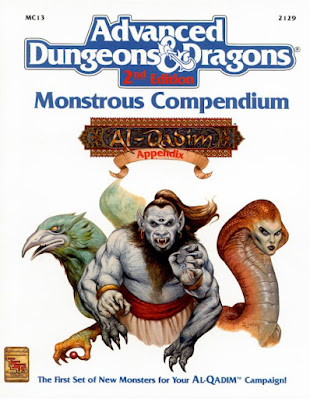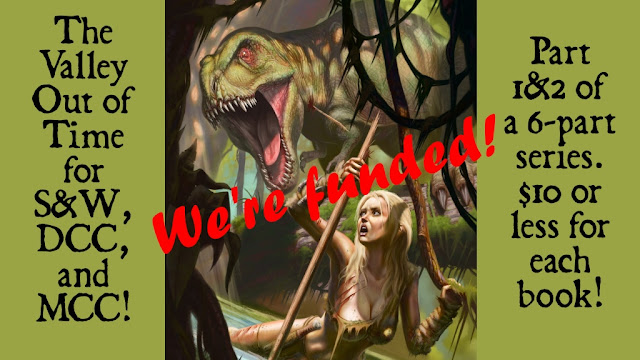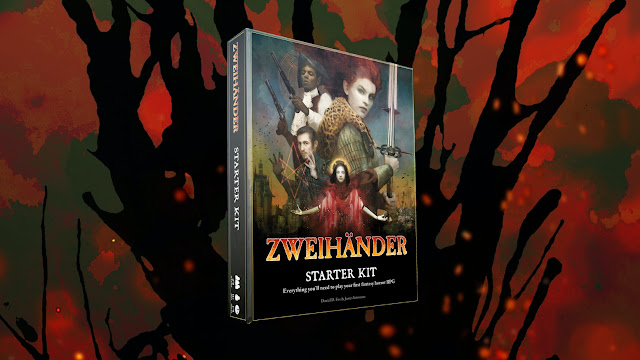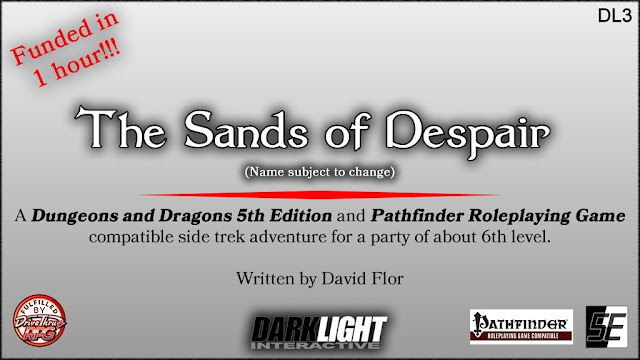
On the tail of the Old School Renaissance has come another movement—the rise of the fanzine. Although the fanzine—a nonprofessional and nonofficial publication produced by fans of a particular cultural phenomenon, got its start in Science Fiction fandom, in the gaming hobby it first started with Chess and Diplomacy fanzines before finding fertile ground in the roleplaying hobby in the 1970s. Here these amateurish publications allowed the hobby a public space for two things. First, they were somewhere that the hobby could voice opinions and ideas that lay outside those of a game’s publisher. Second, in the Golden Age of roleplaying when the Dungeon Masters were expected to create their own settings and adventures, they also provided a rough and ready source of support for the game of your choice. Many also served as vehicles for the fanzine editor’s house campaign and thus they showed another DM and group played said game. This would often change over time if a fanzine accepted submissions. Initially, fanzines were primarily dedicated to the big three RPGs of the 1970s—
Dungeons & Dragons,
RuneQuest, and
Traveller—but fanzines have appeared dedicated to other RPGs since, some of which helped keep a game popular in the face of no official support.
Since 2008 with the publication of
Fight On #1, the Old School Renaissance has had its own fanzines. The advantage of the Old School Renaissance is that the various Retroclones draw from the same source and thus one
Dungeons & Dragons-style RPG is compatible with another. This means that the contents of one fanzine will be compatible with the Retroclone that you already run and play even if not specifically written for it.
Labyrinth Lord and
Lamentations of the Flame Princess Weird Fantasy Roleplay have proved to be popular choices to base fanzines around, as has
Swords & Wizardry. However, whilst the fanzine format is typically used to support other roleplaying games, it has also been used as a vehicle for complete, if small roleplaying games of their own.
The Dead Are Coming: a zombie apocalypse survival rpg is a minimalist roleplaying game built on the architecture of
Into the Odd. It was published by
Gallant Knight Games in 2020, following a successful
Kickstarter campaign as part of the Old Skull Zine RPG Trilogy—the others being
Running Out of Time and
Screams Amongst The Stars—for
ZineQuest #2. As the title suggests, it is a post apocalyptic roleplaying game in which the dead have arisen and the survivors are forced into a struggle to survive, look after their friends and family and keep them safe, and perhaps build a refuge from which they can gain some measure of protection. Arrayed against them are not just small bands of the living dead, but potentially hordes—and not necessarily of the ordinary members of the shambling corpse cortège. They include the Sluggish, the Runner, the Hulk, the Spitter, the Toxic, and more...
The Dead Are Coming includes thirty-six character backgrounds, simple player-facing mechanics, a deadly combat system which emphasises some potentially deadly nasty outcomes, simple rules for handling communities and their actions, ten zombie types, and a set of tables around which the Game Master can build a scenario or campaign. Throughout the world of
The Dead Are Coming is presented as a dangerous one, a world where choices have consequences, and a world where death is just around the corner... Typically shuffling towards you on two legs.
A Survivor in
The Dead Are Coming is defined by three attributes—Strength, Dexterity, and Willpower, his Hit Points, his Resources, and his Background. Resources consist of Food, Water, Bullets, and Fuel, whilst a Background can be anything from a Highschool Student or Foodtruck Chef to Clown or Soccer Star. To create a Survivor, a player rolls two six-sided dice and adds three for each attribute, and can swap two, and rolls one six-sided die for both Hit Points and Resources, the latter determining how many the Survivor has for all four types of Resource. Cross-referencing the results for Hit Points and Resources determines the Survivor’s Background, which gives him one or two useful items. Name, physical details, and personality traits can be rolled on separate tables. The process is quick and easy and takes a few minutes.
Name: Ryan MurdockStrength 9Dexterity 10Willpower 11Hit Points 4Background: ZookeeperResources: 2 (Food 1 Water 1 Bullets 0 Fuel 0)Equipment: Torch, photograph of partner, monkey, tranquiliser darts, dart gunDescription: Goatee, Fanatical
Resources and a Survivor’s Inventory are an important aspect of the game. Food and Water are required daily, Fuel is consumed per four hours of travel, and Bullets are expended only when a one is rolled on a damage die. For ease of play, there is no difference between Fuel types or Bullet types, the emphasis being on survival and play rather than unnecessary details. A Survivor’s Inventory is not just important because of what he is carrying, but how he is carrying it is. It is listed in order of packing and accessibility on the Survivor’s character sheet and if he needs to pull something out of a bag or backpack fast, his player needs to roll higher than the number it is stored on. Of course, this only comes into play when dramatically appropriate, but when it does, it adds to the tension. In addition, every items has a limited durability, after which a Survivor will need to repair, recharge, or refill it that item to use it again—if the item has not been destroyed.
Mechanically,
The Dead Are Coming uses Saves. These are rolls of a twenty-sided die against the appropriate attribute. Depending upon how well prepared a Survivor is, what equipment he has, or whether he an appropriate Background, his player will roll with Advantage, that is roll two twenty-sided dice and use the lowest result. Conversely, if the Survivor is ill-prepared, outmatched, or hindered, his player will roll with Disadvantage.
Combat in
The Dead Are Coming is deadly. Initiative is handled narratively, the Game Master determining who acts depending upon the situation. Any attack always hits, so instead of rolling to hit, the player or Game Master just rolls damage. All weapons ‘explode’ and allow an extra die to be rolled and added to the total if the maximum number on a die is rolled. It is also possible to attack with an advantage or a disadvantage. The former increases the damage inflicted, whilst the later reduces it. Defence, whether unnatural for a Zombie or cover for a Survivor, and any armour worn by a Survivor will reduce the amount of damage done, but after that, it is first deducted from their Hit Points and their Strength. Once a Survivor suffers damage to his Strength, this is Critical Damage and his player must make saves against his Strength and if failed, he becomes Incapacitated. If a Survivor’s Strength is reduced to zero, he is dead, and similarly, if his Dexterity is reduced to zero, he is paralyzed.
In between Strength and Hit Points, there is the Scars table. This is rolled on if a Survivor’s Hit Points is reduced to exactly zero without any Strength damage. The amount of damage suffered determines the result. For example, a two means that the Survivor falters and shakes his head, is forced to reroll his Hit Points, and can Save against one of his attributes, which if failed, will increase its value by one. This and other options are the only way to increase a Survivor’s attributes or Hit Points. The entries on the Scar table are all interesting and can lead to some fun roleplaying outcomes, but because attacks are more likely to inflict damage that will result in Critical Damage, the likelihood of these results coming into play is uncommon.
The Dead Are Coming is a horror roleplaying game and it includes rules for the effect of encountering the cadaver cavalcade. Seeing someone devoured by zombies results in the loss of Willpower and when that is reduced to zero, a Survivor suffers a Stressful Event. This can be anything from the Survivor holding it together and having Advantage for all saves for a short while, to suffering a heart attack and either dying or passing out. Willpower is regained by resting and spending time with a personal item.
The Dead Are Coming is not just about fighting the undead threat, but also dealing with other Survivors, gaining Followers, and eventually forming a Band and perhaps even a Community. Guidance is given for how many Resource Units it might take to gain a favours or trade deals, and simple rules acquiring Followers and how to use them when they coalesce into a Band of twenty people and then a Community of a hundred or more, composed of five Bands. Mechanically, they are treated like a large Survivor, and in battles, they can become broken when they suffer Critical Damage. As part of a Community, a Band can be assigned activities such as scouting ahead, recruiting other Survivors, searching for Resources, and reinforcing the walls of the Community’s home.
For the Game Master there are rules for handling travel, the weather, and encounters, the latter supported with some NPC stats—which are not your average Survivors, for example, Death Cultists and Opportunities pricks—and tables for their gear. Another set of tables, the ‘Apocalypse Toolkit’, provides landmarks, structures, findings, and hazards to be found in the countryside, small towns, and cities. Another pair of tables gives simple adventure hooks and ideas on what to do in the zombie apocalypse. Then there are the zombies. Unlike Survivors, they do not suffer Critical Damage when they suffer Strength damage, but all damage against them explodes when the highest result on any dice is rolled. However, if a Survivor suffers Critical damage against, his player make Saves against Strength, first to avoid being Infected, and when Infected, three more for it to be permanent. The zombies are nasty, and include the expected Sluggish and Runner type zombies, as well as the Zombie Mass, the Exploding Zombie, the Z Dog, and the Z Elephant! Plus there is a table of mutations to spice them up a bit…
The Dead Are Coming includes advice for both the player and the Game Master. For the player, this is ask questions and plan and work with others, build alliances, especially to avoid both risk and dice rolls, the latter because dice rolls because they have consequences. He should also play to survive and play hard—dirty if necessary—but enjoy his Survivor’s death. After all, Survivors are replaceable. For the Game Master, the world of
The Dead Are Coming should be presented as dangerous and make that danger obvious to her players, present choices, show the consequences of those choices, and have her players roll Saves as a result of their making choices.
Physically,
The Dead Are Coming is well presented, its discordant and sometimes urgent layout stressing the unnatural of its post apocalypse. The writing is succinct and to the point, and the artwork decent.
As mechanically simple and straightforward as
The Dead Are Coming is, it will require some set-up upon the part of the Game Master, but that will typically amount to no more than the details of an environment where the Survivors will come together, whether that is one of the Game Master’s devising or one based on a real-world location. Either way, since the game is set in the real world just a few moments into the future, it is a world that is easy to imagine and a world that will be easy to contribute by both players and the Game Master working together. Plus, there is the familiarity of the zombie genre and the roleplaying does come with a good of tables for added inspiration.
The Dead Are Coming combines simple rules with a familiar set-up and genre in which the Survivors need to learn from their Scars to withstand the dangerous nature of the world they now find themselves in. However, that world is brutal and nasty, a post apocalypse in which sometimes the best option is to run—whether that is from the zombies or other Survivors—and that should be a lesson learned fast...
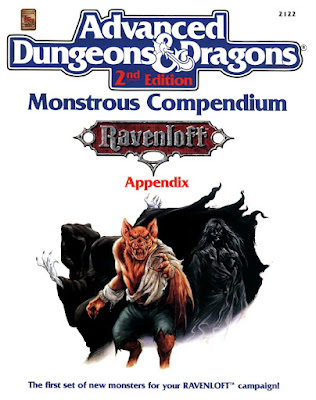 Back at it today with more monsters from AD&D 2nd Edition. I have to say that going through all of these has put me in the mood for an AD&D 2e game at some point.
Back at it today with more monsters from AD&D 2nd Edition. I have to say that going through all of these has put me in the mood for an AD&D 2e game at some point. 







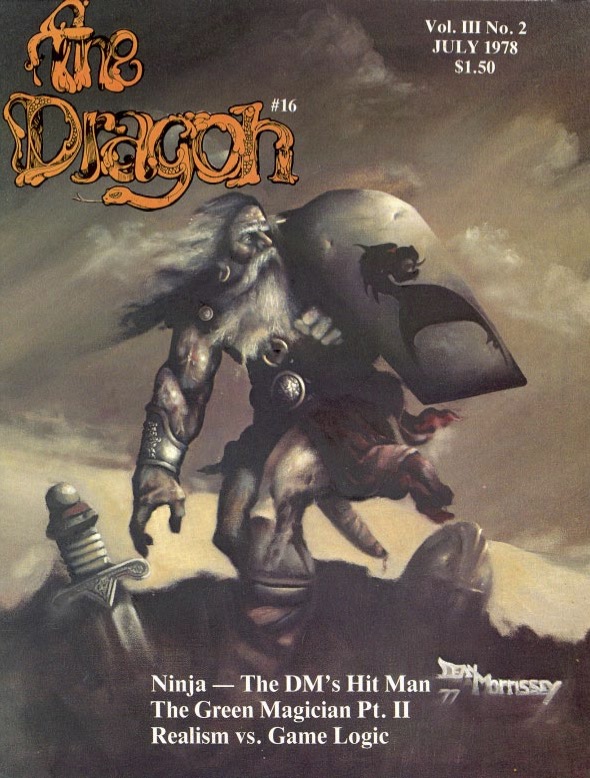 What’s new?
What’s new?










